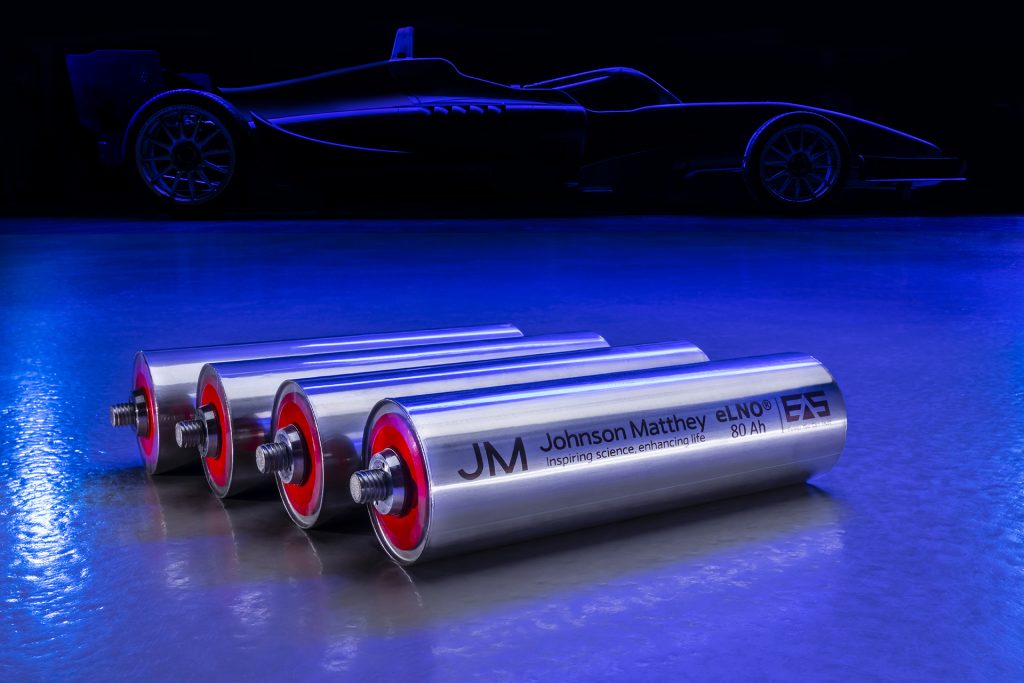Battery cells that feature Johnson Matthey’s eLNO cathode technology are being installed in the world’s first two-seater electric race car.
The global leader in sustainable technologies partnered with Envision Virgin Racing to make the car, and will unveil it at COP26 – the 2021 United Nations Climate Change Conference in Glasgow on 31 October.
eLNO is a family of nickel-rich cathode materials that exhibit around a 20% higher energy density compared to today’s materials, delivering greater EV range.
It will be suitable for use in cells powering the upcoming generation of larger premium passenger cars and SUVs that have fast charging, high performance and long-range requirements.
Scientists at Johnson Matthey have enhanced the chemistry of the cathode material using a proprietary stabiliser package and surface modification, engineering the cathode material down to the atomic level. This enables the use of high nickel contents for increased driving range, as well as a reduction in the level of cobalt present, to sustain cycle life and stability.
eLNO, which has already been in pilot production and is being trialled by customers, will be supplied from two new production facilities in Poland and Finland. The first facility in Poland is already under construction and will be completed in 2022, ready for commercial production from 2024. Johnson Matthey is yet to confirm when the facility in Finland will be built.
The cylindrical 602030-format cells were manufactured using an almost dry coating process – which has a far lower carbon footprint than typical wet coating – with a non-toxic solvent, and less solvent waste than typical cell production processes.
Christian Gϋnther, battery materials sector chief executive at Johnson Matthey, said: “Our eLNO technology will provide a step-change in battery energy density for electric vehicles going on sale in just a few years’ time. It therefore supports the industry’s commitment to fighting climate change.”
